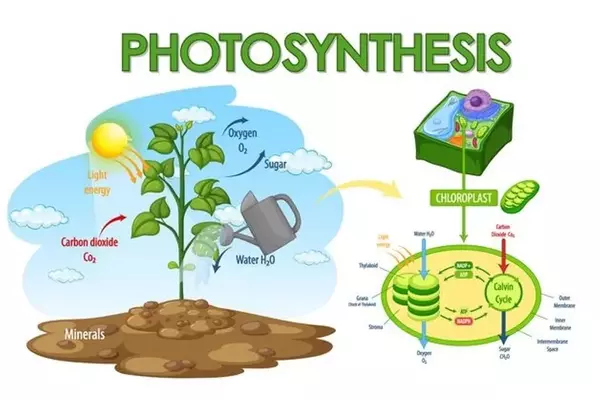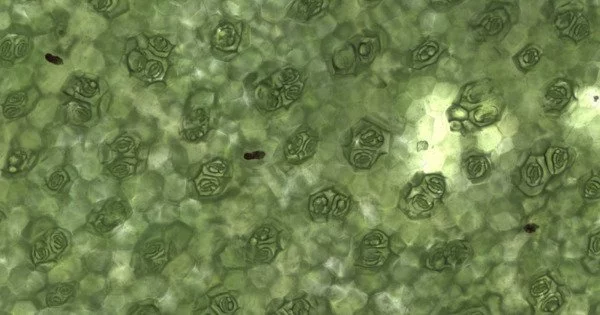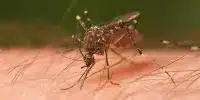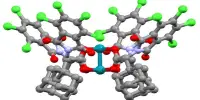Scientists recently identified a long-sought carbon dioxide sensor in plants, which is critical for controlling water evaporation, photosynthesis, and plant growth, using a combination of tools and research approaches. The discovery demonstrated that two proteins collaborate to form the sensor, which has implications for trees, crops, and wildfires.
Researchers discovered that plants can sense carbon dioxide (CO2) concentrations more than 50 years ago. As CO2 levels fluctuate, “breathing” pores in leaves known as stomata open and close, controlling water evaporation, photosynthesis, and plant growth. Evaporation through stomata causes plants to lose more than 90% of their water. The regulation of stomatal pore openings by CO2 is critical for determining how much water plants lose, and this is especially important given the increased carbon dioxide effects on climate and water resources in a warming world. However, identifying the carbon dioxide sensor and explaining how it works within plants has long been a mystery.
Scientists at the University of California, San Diego, recently identified and unraveled the long-sought CO2 sensor in Arabidopsis plants using a combination of tools and research approaches. Yohei Takahashi, a UC San Diego project scientist, and Julian Schroeder, a Distinguished Professor in the School of Biological Sciences, along with their colleagues, identified the CO2 sensor mechanism and detailed its genetic, biochemical, physiological, and predicted structural properties. Their findings were published in Science Advances.
Our findings reveal that plants sense changes in CO2 concentration by the reversible interaction of two proteins to regulate stomatal movements. This could provide us a new plant engineering and chemical target towards efficient plant water use and CO2 uptake from the atmosphere.
Yohei Takahashi
Since the stomatal pores control plant water loss, the sensor is vital for water management and holds implications for climate-induced drought, wildfires and agricultural crop management.
“For each carbon dioxide molecule taken in, a typical plant loses some 200 to 500 water molecules to evaporation through the stomatal pores,” said Schroeder, Novartis Chair and faculty member in the Department of Cell and Developmental Biology. “The sensor is extremely relevant because it recognizes when CO2 concentrations go up and determines how much water a plant loses as carbon dioxide is taken in.”
One critical surprise from the new research was the composition of the sensor. Rather than tracing it to a single source or protein, the researchers found that the sensor operates through two plant proteins working together. These were identified as 1) a “high leaf temperature1” protein kinase known as HT1 and 2) specific members of a mitogen-activated protein kinase family, or “MAP” kinase enzyme, known as MPK4 and MPK12.

“Our findings reveal that plants sense changes in CO2 concentration by the reversible interaction of two proteins to regulate stomatal movements,” said Takahashi, who is now based at the Institute of Transformative Bio-Molecules, Japan. “This could provide us a new plant engineering and chemical target towards efficient plant water use and CO2 uptake from the atmosphere.”
As CO2 levels rise, the team’s findings, which have been filed in a UC San Diego patent, could lead to innovations in efficient water use by plants.
“This finding is relevant not only for crops, but also for trees and their deep roots, which can dry out soils if there is no rain for an extended period of time, leading to wildfires,” said Schroeder. “If we can use this new knowledge to help trees respond better to increases in CO2 in the atmosphere, the soil may dry out more slowly. Similarly, crop water use efficiency could be improved, yielding more crop per drop.”
The researchers worked with graduate student Christian Seitz and Professor Andrew McCammon from the Department of Chemistry and Biochemistry to expand on their sensor discovery. Seitz and McCammon used cutting-edge techniques to create a detailed model of the sensor’s intricate structure. The model included areas where genetic mutations are known to limit plants’ ability to regulate transpiration in response to carbon dioxide. The new images revealed that the mutants congregate in an area where the two sensor proteins, HT1 and MPK, interact.
“This work is a wonderful example of curiosity-driven research that brings together several disciplines — from genetics to modeling to systems biology and results in new knowledge with the potential to benefit society, in this case by making more robust crops,” said Matthew Buechner, a program director in the National Science Foundation’s Directorate for Biological Sciences, which funded the research.














